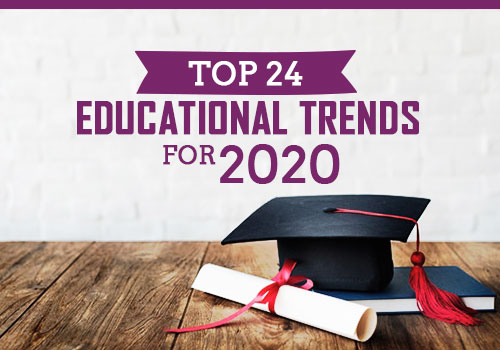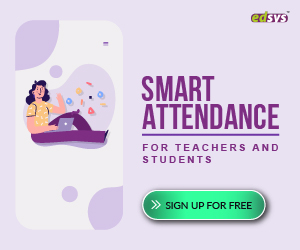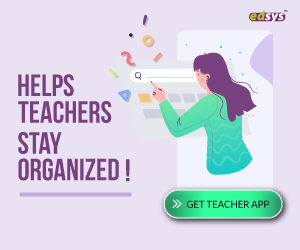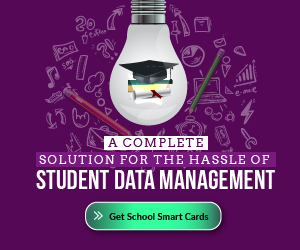Every year we are seeing a change of trends in almost all sectors and the case is no different in the field of education.
This is one of the areas we see a lot of remarkable changes every year. It makes serious impacts on a student’s perspective on education and the learning outcomes.
It depends on a lot of factors including available resources, what options are affordable for a larger society and the changing needs or demands of the present generation students. Education trends are dynamic in nature.
Here let us have a look at the educational trends you will witness in the year 2019.
1. Integrated Learning Solutions
It is not a Practical Idea for schools to wait till 100% digitalization to give students the taste of modern education.
Integrated learning solutions are now an accepted reality in most schools. They are aiming to provide optimum digital infrastructure requirements while keeping traditional textbooks as the base.
In fact, it is unfair for a group of students to remain unaware of the benefits of digital education just because of the connectivity and infrastructure issues.
Intelligent solutions like a print textbook associated with audio-visual content for a smartboard which is linked to an online assessment structure can work wonders to improve learning outcomes.
Get FREE GK Apps (Check it Now)
2. Augmented Reality
Knowledge retention improves drastically when learning involves audio, video, and visuals which is lacking in traditional lectures.
This is one reason why schools have accepted virtual reality with both hands.
In fact, virtual reality is not only about seeing something but about experiencing the subject which helps students to learn with better understanding.
Teachers can find this as a feasible option to teach them complex concepts with comparatively a lesser time with the additional benefit of knowledge retention.
Augmented reality can take learning to a new level as the students just experience the subject.
3. Personalized Learning
This is going to be a notable trend of the year as students can learn without worrying about device, location and timing constraints.
Know More: 16 Innovative Ideas To Make Teaching Methods More Effective.
This even changes the way of education delivery or learning process and students can learn without a barrier of their strength, weakness or pace of understanding.
This is, in fact, a game changer for students with special needs as they get the flexibility or freedom to learn at their pace and be competent enough at the end of the academic year.
For instance, apps like Dragon Speak are assisting dyslexic students to learn through audiobooks to overcome their limitations of textbook methods.
4. Professional Development of Teachers
The educators are of course an integral element of the learning ecosystem. And that is why it is important to familiarise them with present generation competencies and skills so that students can experience the best of the technologies available now.
This simply pushes the need for professional development programs when they can get better with the novel teaching-learning pedagogies as well as enhance their lateral thinking abilities.
School authorities are taking initiatives to organize such programs and training for teachers of all level classes to help them make an impact on the present learning trends. Surprisingly, the trend is now seen in both private as well as public sector educational institutions.
5. Bite-Sized Learning
Short-term attention span has always been an issue in the education sector. Students have struggled a lot to cope with the long, intense text. The learning content has not been very interactive, which reduced learning abilities in students.
Now, the education sector has started understanding the unique learning needs of each and every student. This has been possible due to emerging digital technologies.
Teachers are now able to incorporate bite-sized or nano-learning to reduce the intensity and increase the effectiveness of learning. This trend is growing at a fast pace.
The learning model is divided into small interactive sections. This supports the behavior of learners and ensures 100% attention during every learning session.
Get FREE GK Apps (Check it Now)
6. Internet of Things
This is, in fact, a much-discussed area in the digital transformation trends in the field of education.
Unlike just the energy efficiencies, IoT is putting forward options for teachers and school authorities to better organize the daily school activities.
This even provides additional options like sharing student results with other teachers or parents in real time or track the completion of home works easily.
Teachers can also use it as a domain to alert students about some potential issues or use it to easily evaluate if their teaching strategies are working through polls.
7. Formative assessment solutions
The importance of learning outcomes will be focussed more and that is why formative assessment solutions are adopted.
Know More: Top 10 College Apps For Students
The routine assessment options like basic tests for recall at the end of a term may prove less productive in this digital era.
Through formative assessments, learning makes an impact as it tests the student’s progress together with curriculum delivery and analyzes personal and social competencies.
In fact, students will get a personalized feel of the outcomes as these techniques are adaptive, which is another reason why institutions now largely choose formative assessment over the routine cookie-cutter approaches.
8. More Flexible Seating
Some of you may wonder if this is something very important to education.
In fact, research has suggested that it can have a remarkable impact on the way students perceive education.
Understanding its significance, schools have started giving them choices to opt for the way they like to be seated in a class.
This can be standing desks, large pillows, bucket chairs, or even café style stools unlike the traditional classroom set up.
It is after all about the freedom children experience, which in turn changes the way they see education.
9. Exam Management Revolution
The way exams are conducted and evaluated is going to be changed which avoids the hectic traditional styles including exam invigilation, exam centers, and answer sheet evaluation.
AI-based proctoring can bring a lot of changes in the way exams are managed as infrastructure or logistics are no more barriers.
With this technology, students are allowed to take exams despite their location.
However, this makes sure if the students are taking exams in a fair manner with intelligence features to track and monitor by means of advanced image, video and audio streaming.
10. Blockchain Technology
This innovative technology will make a remarkable difference in the way schools handle student credentials and certificate verification.
It provides an option to store digital copies of credentials like certificates in a collaborated and the distributed environment.
This avoids the cases of lost original certificate and helps with a better way of student record authentication.
11. Digital Ethics and Privacy
Upholding the significance of digital ethics and privacy is becoming very important in the present educational era.
Giving importance to this right from the school days in fact help students to have early learning about the possible scenarios well in advance.
The scenario has become diligently important with the increasing rise of social media influence as well as data leaks and data terrorism.
Get FREE GK Apps (Check it Now)
12. Online Education
With the widespread acceptance and influence of mobile gadgets, providing online education is a concept which can be delivered a lot easy than ever before.
Even working professionals or students with problems of transportation can access education without confinement.
This proposes a platform to provide education through videos and tutorials to the students of rural areas where they can get it at affordable rates.
Moreover, value-added certifications offered online can enhance the employability of the students.
13. Shifting from STEM to STEAM
For a long time, the education system revolved around the STEM approach.
So, the integral education aspects were science, technology, engineering, and mathematics. But this has become a bit outdated nowadays.
However, various industries ask for professionals who disciplined in the areas of creativity and art.
The last few years have increased the popularity of the STEAM approach to learning.
The “A” stands for Arts, which includes the creative aspect of learning.
Businesses give merit to creativity and thinking, especially in the fields of innovation, leading, teaching and others.
Even teachers need to evolve their creative thinking to utilize unique teaching methods and design age-appropriate learning models.
14. Smart Spaces
This was one of the much-awaited trends for long years and in fact, it serves as a platform or literal physical space where humans can interact with modern technology.
This simply means that students and teachers get a chance to use the traditional classroom set up where they can utilize the most modern technologies.
This will be a dream come true for many learning enthusiasts as the result is a classroom with artificial intelligence-driven analytics, smart boards, learning management systems as well as robots to carry out process-driven tasks.
15. Cost Management in Education
As the technology is rising in the education sector, administrations will require in-depth planning to ensure relevant investment.
With the correct strategy, education industry will see a great improvement in terms of cost management.
In the coming years, educational institutes are expected to invest more in cloud technologies to reduce operational cost.
It will also improve the efficiency of operations in the education industry due to shared services.
The cost of printing and papers will diminish with the rise of blockchain technology in the education sector.
All the important documents, certificates, diplomas and others will take a digital form.
This will reduce the labor cost as well, which is generally required to store, manage and maintain a lot of data in institutes.
While other areas will go down with respect to cost, the computing aspect will require more investment.
More and more classes are now connected. Hence, the demand for improved computing resources is natural.
This cost will enhance the operations. Sending information processing transactions and various other functions will become digital and simpler.
16. Increasing Wellness Programs
The education sector has been giving importance to the wellness of students a lot in the past few years.
Know More: 14 Fun Classroom Activities For Students
And this will increase as the rise of wellness programs. These programs will focus on resolving issues such as anxiety, stress and other disorders that lead to learning disabilities.
Students will get comprehensive awareness about their emotional, physical and spiritual being.
The education sector is, in fact, a vast area and the perspectives can differ depending on the facilities of the school, the type of students you are handling and importantly on the immediate society.
Still, all or most of these trends can make at least a small impact on all types of educational ventures of our country.
Parents, students, teachers, school management and policy-making bodies can make an impact on the way how trends are changing over the years.
17) The Changing Role of a Teacher
The 21st century has changed the concept of a teacher too. More than a data feeder, the teacher has become someone who nurtures the learners adequately. This trend has become the crux of the student-centered approach to learning.
The teacher has become a person who guides his/ her class through activities and sharing the wonder of discovery.
Though involved in the activities, a teacher should keep an eye on monitoring the personal progress of individuals and helping the ones who need special attention and help.
18)Artificial Intelligence Learning
The impact of artificial intelligence in the field of education is flourishing.AI keeps altering education institutions and tools used.
In this tech era, there are more sites that use AI technology to assess a student’s progress. Apps like Duolingo and writing tools like No Red Ink focuses on how AI provides individual revisions and internet-based learning.
The main advantage of AI is that it provides real-time feedback and continual targeted practice for students. Teachers can analyze where the students stand up to and also they can tailor up better lesson plans.
Teachers can get help from the monotonous task of paper corrections and plagiarism checking with the help of AI features.
19) Cultivation of empathy
One of the main problems of the classroom is poor behavior among students.
Compassion for others, good communication skills, empathy and good relationship with classmates are required for students to create a positive character.
Empathy is necessary for individuals to build up a trusted and friendly relationship among students.
The teachers should include more group activities for students to make them interact with other students. The schools which focus on improving empathy have higher achieving students as their outcome.
20) Genius Hour
Students should be given a chance for ‘genius hour’ during which they can choose to learn and explore their favorite and interesting subjects.
The benefit of giving a self-paced mode of study help in the growth of creativity and inquiry in students.
Help students to discover their passion and develop an interest in the subject is the teacher’s task. Help them to have in-depth subject knowledge.
21) Reading through a digital library
Digital libraries should be encouraged for reluctant readers. Students should be given the freedom to explore, observe, question and infer from the surroundings.
Reading helps to expand knowledge and gain information about anything and everything.
22) Nudge Tech
Nudge Tech generally refers to a collection of technologies that include data, cloud, social, etc.
All these work together to achieve timely personalized interaction with teachers, students, and other staff.
23) Smart campus
A smart campus refers to a digitized campus. Humans and technology-enabled environments interact to create an immersive and impressive experience.
The use of the internet in the field of education has improved from previous years.
24) Wireless presentation Technologies
The use of wireless presentation Technologies helps teachers and stakeholders to easily find project materials from a computer or a mobile phone rather than the use of a hard-wired connection like a projector.
Hope these changes can bring in good to the modern student era and let the educational institutions make the best use of it to develop better citizens for tomorrow.



